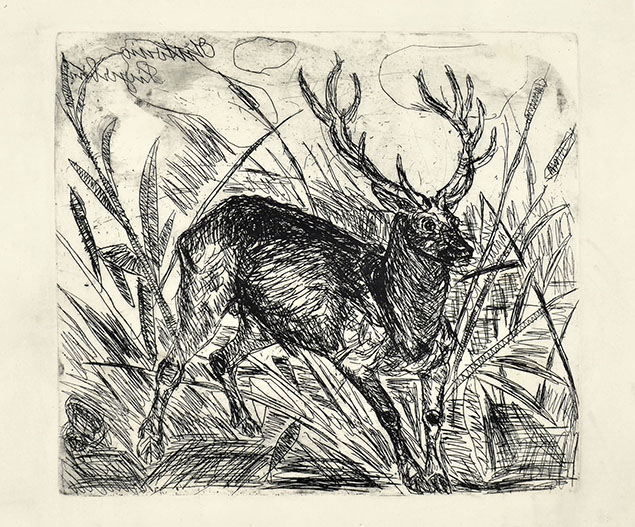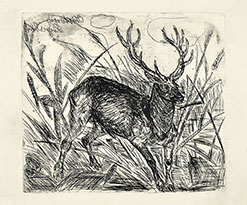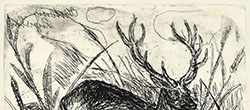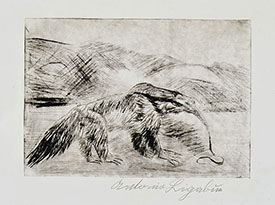(Zürich 1899 - Gualtieri 1965)
CERVO GRANDE, circa 1954
A rare, early impression of this etching, printed by Arnaldo Bartoli in Guastalla on a sheet of quite thick wove paper. The impression, signed on the plate, is exceptionally rich in ink, and clearly shows the scratches on the plate and the areas of foul bite that were subsequently removed. To the platemark 290 x 327 mm, the full sheet 345 x 415 mm.
See Fondazione Archivio Antonio Ligabue di Parma, Augusto Tota, Marzio Dall’Acqua, Catalogo Generale di Antonio Ligabue, Sculture, Disegni e Incisioni, Parma 2020, cat. incisioni, no 7.
Ligabue's relationship with Arnaldo Bartoli (Reggio Emilia, 1900 - Guastalla, 1993), a painter and writer, is well known. Bartoli hosted him for a long time in Guastalla. It was to Bartoli, himself a self-taught engraver, that Ligabue turned for help with printing. Thus, in the early 1950s, Bartoli prepared the plates for Ligabue's first etchings, printing them in a few unnumbered artist's proofs. As a self-taught artist, Bartoli printed with great enthusiasm, but little professional rigor, unlike Alberto Manfredi (Reggio Emilia, 1930 - 2001), the refined etcher and printer who would publish many of the subsequent editions of Ligabue's etchings and drypoints.
A Swiss-born Italian outsider artist known for his intensely emotional paintings and sculptures, particularly of wild animals and self-portraits, which depict his inner struggles. After a difficult childhood, often in isolation and with foster families, and facing expulsion from Switzerland, he settled in Gualtieri, Italy. His life was marked by poverty, mental illness, and periods of psychiatric confinement, but he found artistic expression through the guidance of artist Renato Marino Mazzacurati, who helped him practicing art as a profession. Toni al mat (the mad), so he was called, found in the artistic practice that safe place he had never been to, and also the opportunity to express his feelings.
He gained public recognition for his raw, expressive works in the 1960s, becoming a celebrated figure before his death in 1965.



